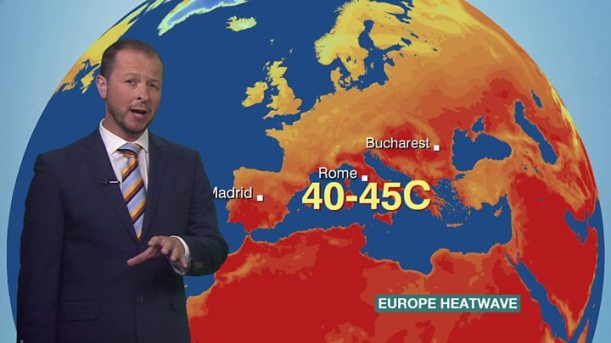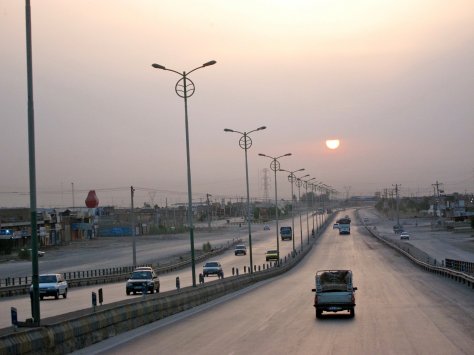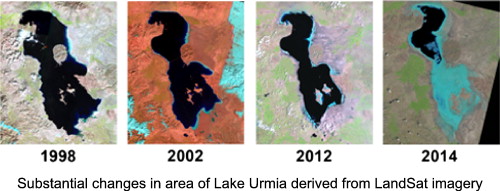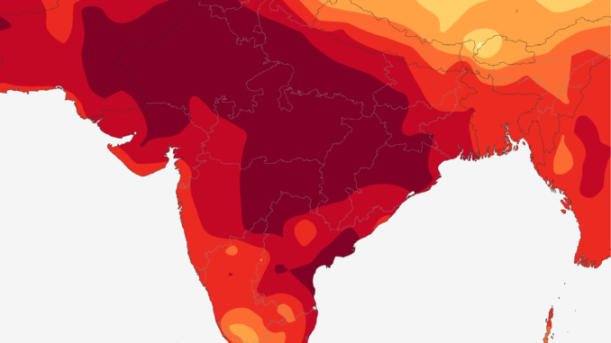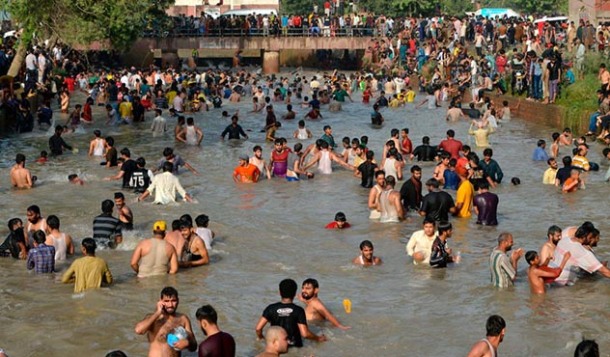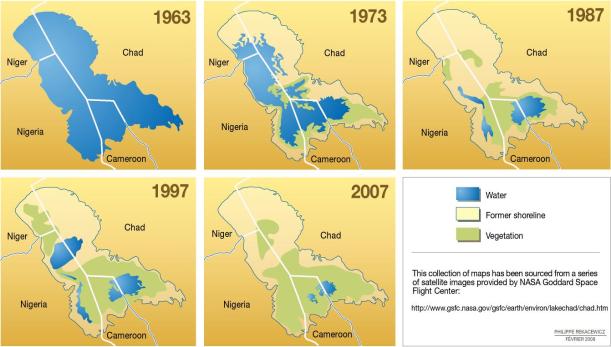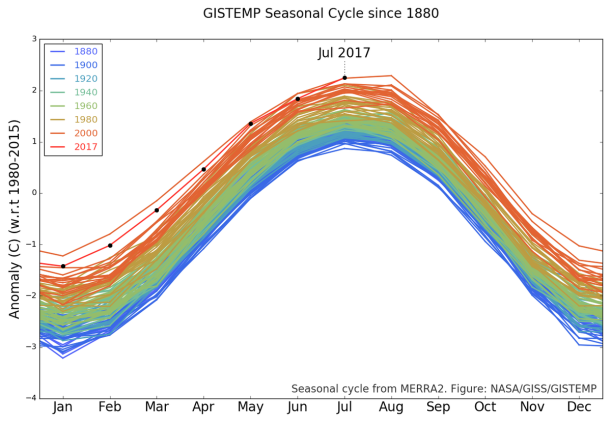Two recent reports have shown increasing desertification in both Europe and Central Asia. These are:
https://www.nature.com/articles/d41586-022-01667-2

Global distribution of desert areas according to their aridity
(from researchgate.net)
Globally and Europe:
The Horizon link copied above:
The scale of the issue is sometimes under-appreciated, but drylands cover over 41% of the Earth’s terrestrial land surface. They are now home to over 38% of the world’s population. The UN sponsored the World Day to Combat Desertification and Drought on 17 June 2022 to highlight the issue.
Droughts lead to the loss of arable land through desertification, the death of vegetation and a scarcity of drinking water.
Europe is not immune to the intensifying aridity, quite apart from heatwaves. Water stress and aridity affect 168 000 square kilometres in Italy and 365 000 square kilometres in Spain, according to data compiled by the Joint Research Centre (JRC). (See box below).
Scientists in the DRY-2-DRY project, using climate models, satellite data and meteorological measurements, are researching the capacity of drought and heatwaves to intensify and propagate by themselves.
‘This is a process that hasn’t been studied before,’ said Prof Diego Miralles, Professor of Hydrology and Climate at Ghent University, Belgium.
By understanding it better, we can get better forecasts of how droughts may evolve and set early warnings for adaptation early enough,’ he said.
‘This balance of moisture has been changing due to global warming. While precipitation is changing differently in different regions, evaporation is mostly increasing due to the increase in temperature. Therefore, there is a tendency for most regions in the world to become increasingly arid,’ said Miralles.
‘This is known to happen locally,’ said Miralles, ‘But we are looking at how the wind moving that mass of dry air to another location can trigger a new drought. It becomes a bit like a wildfire.’
The impact of rising global temperatures means, not only are there heat waves and more droughts but they tend to occur at the same time.
Prof Fernando Maestre, professor of Ecology at the University of Alicante, began his research in Spain in 2005. The project BIODESERT carried out the first global field survey to evaluate how changes in climate and land use, such as grazing pressure, affect drylands ecosystems.
In order to survey such a vast phenomenon, collaborative work is key. The BIODESERT project is now global and includes scientists and ecosystems from 21 countries on all continents, with the exception of Antarctica.
“Until a few years ago, nobody could imagine the important role of biodiversity in global drylands.”
With the shifting sands of time, the problem of land degradation in arid areas and drylands has spread since the first UN Plan of Action to Combat Desertification was adopted in 1977. There are serious threats to food security, biodiversity and the world economy as more and more territory succumbs to desertification.
The researchers observed that plant and microbial diversity plays a key role in maintaining the capacity of drylands to provide essential ecosystem services linked to soil fertility and the production of plant biomass. These ecosystem services are fundamental for supporting the livelihood of more than one billion people globally.
They also reported that increases in aridity promote abrupt changes on the structure and functioning of drylands. This culminates with a shift to low-cover (sparse vegetation) ecosystems that are nutrient- and species-poor at high aridity values.
________________________________________________________________________________________________________________
Climate change is turning more of Central Asia into desert

As global temperatures rise, desert climates have spread north by up to 100 kilometres in parts of Central Asia since the 1980s, a climate assessment reveals1.
The study, published on 27 May in Geophysical Research Letters, also found that over the past 35 years, temperatures have increased across all of Central Asia, which includes parts of China, Uzbekistan and Kyrgyzstan. In the same period, mountain regions have become hotter and wetter — which might have accelerated the retreat of some major glaciers.

Such changes threaten ecosystems and those who rely on them, says Jeffrey Dukes, an ecologist at the Carnegie Institution for Science’s Department of Global Ecology in Stanford, California. The findings are a “great first step” towards informing mitigation and adaptation policies, he says.
Hu and climate scientist Zihang Han at Lanzhou University in China used air temperature and precipitation data from 1960 to 2020 to divide Central Asia into 11 climate types.
They found that since the late 1980s, the area classed as having a desert climate has expanded eastwards, and has spread north by as much as 100 kilometres in northern Uzbekistan and Kyrgyzstan, in southern Kazakhstan and around the Junggar Basin in northwestern China. Hu says this is a substantial expansion and has had a domino effect on adjacent climate zones, which have also become drier. In some areas, the annual average temperature was at least 5 °C higher between 1990 and 2020 than it was between 1960 and 1979, with summers becoming drier and rainfall occurring mostly during winter.
Over time, increasing temperatures and decreasing rainfall will see plant communities becoming dominated by species that are adapted to hotter and drier conditions, says Dukes. “That’s going to have consequences for things like the grazing animals that are dependent on the steppe or the grasslands,” he says. In some regions, he adds, extended periods of drought will reduce the land’s productivity until it becomes ‘dead’ soil.
Warmer and wetter
The team found a different situation in mountain regions. In the Tian Shan range of northwestern China, rising temperatures have been accompanied by an increase in the amount of precipitation that falls as rain rather than snow. Higher temperatures and increased rainfall contribute to melting ice at high elevations, which might explain the unprecedented shrinking rate of glaciers in this range, Hu says.
With a reduction in snowfall, glaciers in Central Asia will not replenish lost ice, meaning that less meltwater will flow to people and crops in the future, says Troy Sternberg, a geographer at the University of Oxford, UK.
Desertification is an issue in Central Asia and other parts of the world, says Mickey Glantz, a climate scientist at the University of Colorado Boulder. But to conclude definitively that deserts are expanding, researchers should look at indicators such as dust storms and heatwaves, rather than relying solely on climate classification.
Human activities such as mining and agriculture also contribute to desertification, Sternberg notes. So governments in Central Asia should focus on sustainable farming and urbanization, he says. “Central Asia, like the rest of the world, should pay attention to the changing climate and try to be more adaptable to it.”
__________________________________________________________________________________________________________________

